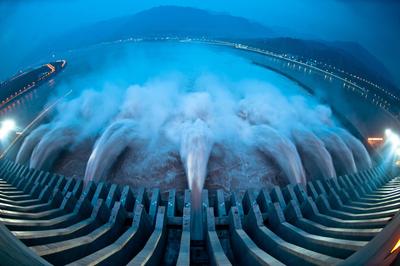There are four distinct trends in Chinese overseas mergers and acquisitions that have led to particular challenges for Chinese firms.
First, Chinese overseas mergers and acquisitions in the energy sector are still dominated by state-owned enterprises (SOEs), which are beginning to invest in renewables. The world is still highly dependent on oil and other traditional energy sources, but renewable energy development is likely to lead a 21st-century industrial revolution. China does not want to miss this opportunity. For example, China Three Gorges, the hydropower enterprise, is determined to become a world-class clean energy group by 2020. At the end of 2012, it invested US$500 million buying 49 per cent equity shareholding and 25 per cent outstanding shareholders loans in EDP Renováveis Portugal, a world leader in the renewable energy sector. A key factor behind the success of China Three Gorges is its AAA credit rating (according to Chinese ratings agencies),which means that its overseas transactions are backed by substantial support from the Chinese government and big banks. The health of China Three Gorges’ finances also ensures that this Chinese homegrown enterprise has abundant capital to spend overseas.
Some private enterprises have also tried to pursue overseas mergers in renewable energy but very few are successful. Wanxiang Group is a notable exception, but most Chinese local private enterprises lack deep understanding of foreign investment climates and commercial experience overseas. Worse still, a large number of Chinese private companies find it difficult to raise the money required to purchase assets overseas.
Second, Chinese firms are speeding up investment in manufacturing assets overseas. Mergers and acquisitions in manufacturing are noteworthy, and the investor profile is different to the energy sector. The share of private enterprises is increasing, and the targets of investment are expanding to Southeast Asia, Africa and Latin America. Investment has increased remarkably since 2002, when Chinese firms were involved in 17 overseas manufacturing mergers and acquisitions, in which the average scale was US$51 million. In 2011 there were 109 transactions with an average scale of US$129 million.
Third, it is clear that Chinese firms are increasingly willing to pay a high price to acquire assets — a ‘China premium’. In order to secure the target, Chinese enterprises, especially SOEs, usually offer a much higher price than the normal market valuation — on average approximately 50 per cent more. This ‘China premium’ is likely to remain high in following years. But it should be noted that paying a high price does not guarantee success. The attempted mergers of CNOOC with Unocal in 2005, CNOOC with Gorgon in 2006 and Chinalco with Rio Tinto in 2009 all failed despite the offer of a high ‘China premium’.
Fourth, Chinese firms are becoming more rational, and no longer pursue 100 per cent equity control. Most Chinese managers lack experience in overseas mergers and acquisitions and have difficulty doing their due diligence and integrating the company post-merger. More and more Chinese enterprises are pursuing a minority overseas investment with the condition that they get a voting right on the board of directors of the target company.
In the future, there are four major things Chinese firms should pay particular attention to while conducting overseas mergers and acquisitions.
First, Chinese SOEs should take the advantage of the 2008 global financial crisis and the 2010 European debt crisis to seek favourable targets in developed economies so as to obtain advanced technologies, management skills and prestigious brands. But Chinese SOEs should be aware of the unfavourable regulatory conditions imposed by the Committee on Foreign Investment in the United States. This is especially true in the renewable energy sector, where policy uncertainty in the United States, as well as the unfamiliarity of American investment and financing methods — such as tax equity financing — pose additional investment risks. Chinese enterprises could target countries with relatively simple regulations and take a roundabout way to enter the US market by acquiring multinationals headquartered in Europe but with subsidiaries in North America.
Second, ambitious private enterprises, which have limited funds and experience, need to conduct a serious feasibility study before they embark on expansion attempts. Many private enterprises see potential in the African market and jump in headlong without any consideration of the risks involved or the environment. For example, some private enterprises wanted to acquire solar power companies in Cameroon, but the country still primarily uses hydropower; renewable energy sources are in their infancy. If Chinese enterprises go abroad recklessly without understanding the host market and investment returns, they are likely to lose all their money.
Third, both SOEs and private enterprises should communicate with foreign authorities and establish a good image. A recent World Bank report pointed out that Chinese overseas investments ‘lack transparency’ and ‘loot local employment’. Chinese enterprises should emphasise their business intent and downplay the support of the Chinese government. They should also explain to foreign governments, media, communities and employees in target companies how they would protect local employment and intellectual property rights. More importantly, as a former high-level official from the US Treasury Department highlights, Chinese enterprises need to start developing a culture of hiring expertise that can help them. Chinese enterprises will find the best experts with the best connections locally. Getting the relationships right in the local areas where they are making the investment is the most important thing.
Fourth, post-merger, Chinese enterprises have an opportunity to learn from Western practices in corporate management, financial accounting and operations, market positioning, and technological research and development. In truth, compared with established multinationals, Chinese enterprises do not have much of an advantage, except for ample funds. They’ll have to learn quickly.
Yuhan Zhang is an energy professional in a multinational energy company based in the United States and a former researcher at the Carnegie Endowment for International Peace. This is an abridged version of a Chinese article published on the Financial Times Chinese website on 21 January 2013.

